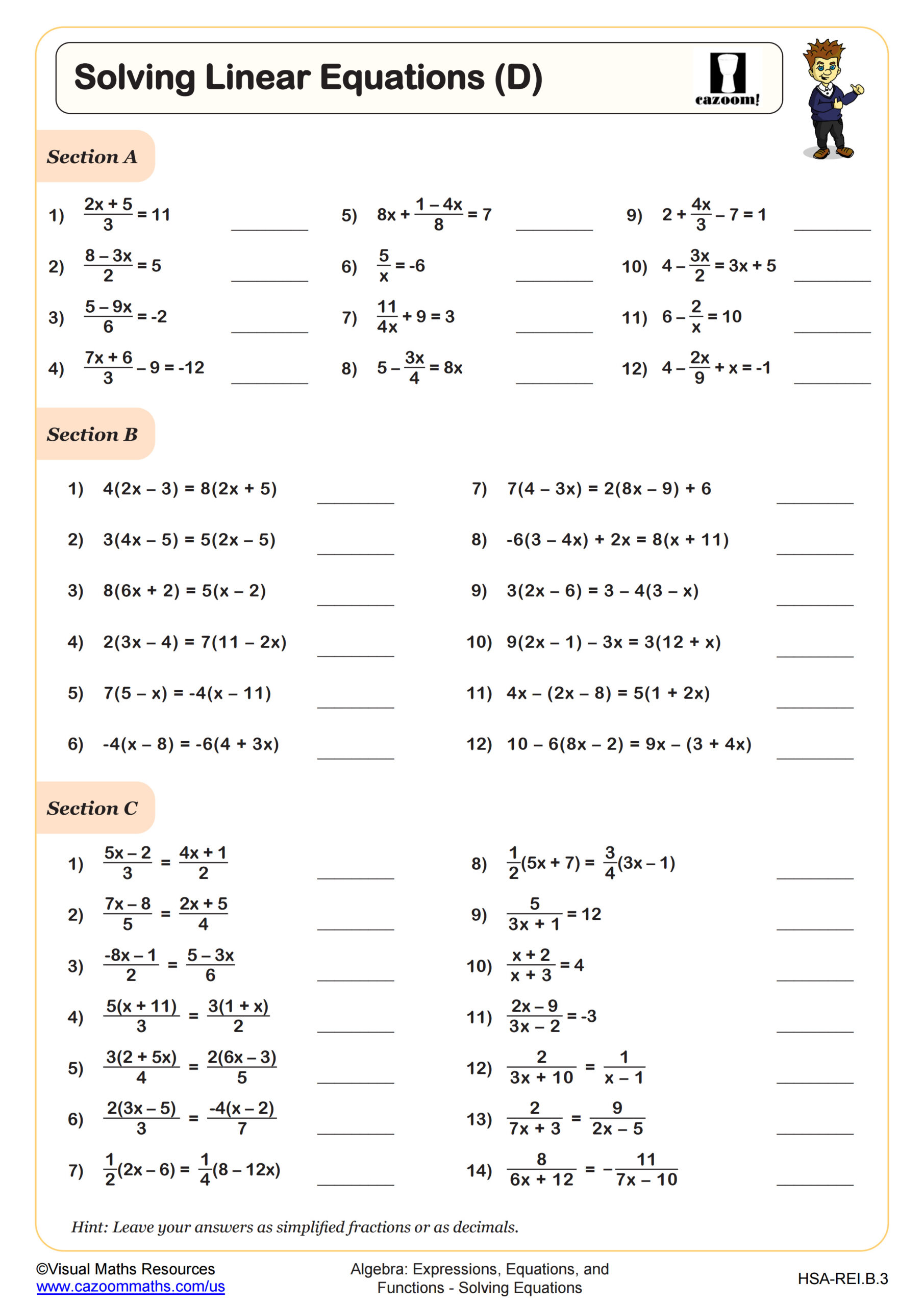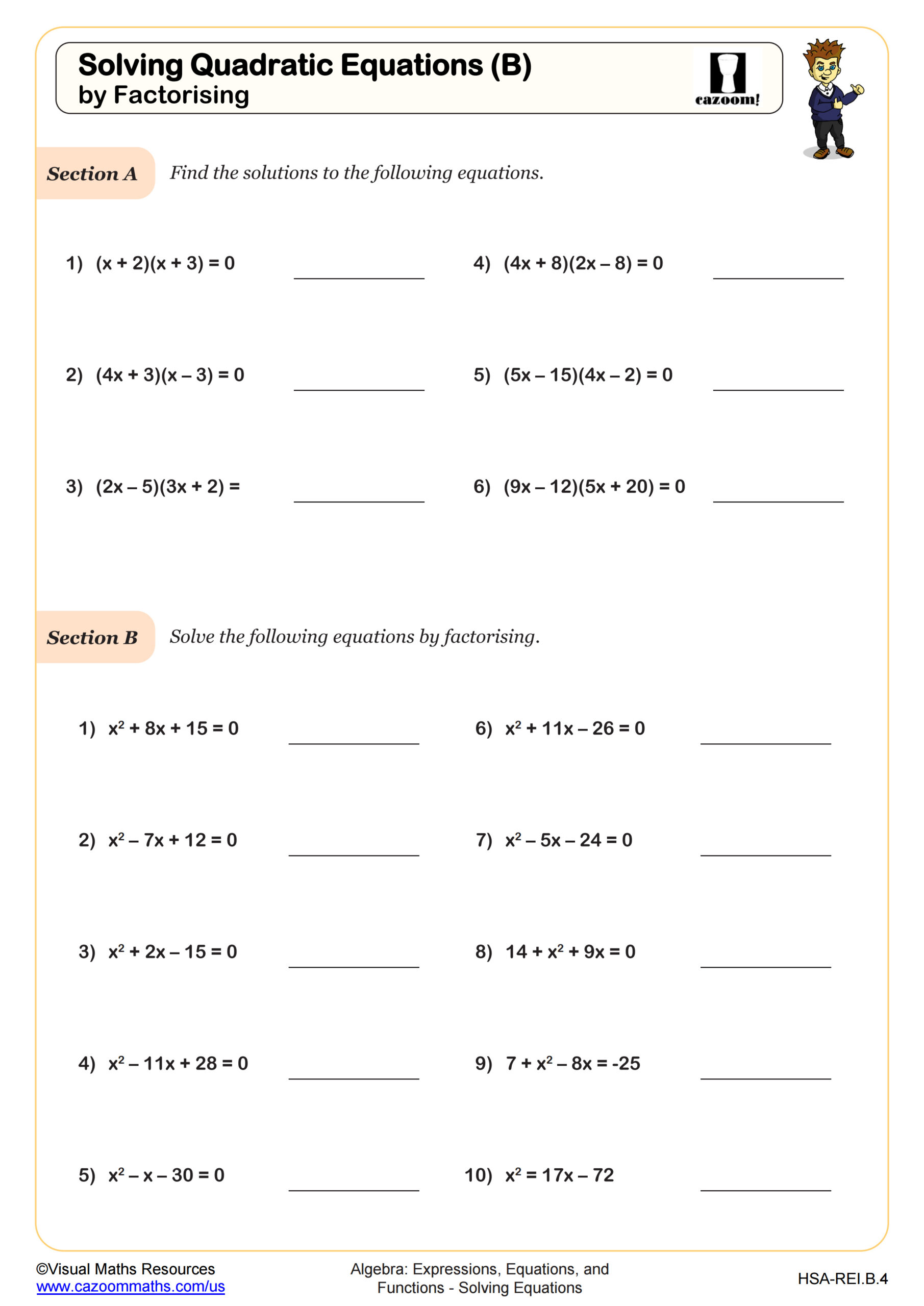Loading...
Back to:
Solving Systems of Linear Equations WORKSHEET
Suitable for Grades: Algebra I, IM 1
CCSS: 8.EE.C.8, HSA.CED.A.2, HSA.REI.C.6
CCSS Description: a. Understand that solutions to a system of two linear equations in two variables correspond to points of intersection of their graphs, because points of intersection satisfy both equations simultaneously. b. Solve systems of two linear equations in two variables algebraically, and estimate solutions by graphing the equations. Solve simple cases by inspection. For example, 3x + 2y = 5 and 3x + 2y = 6 have no solution because 3x + 2y cannot simultaneously be 5 and 6. c. Solve real-world and mathematical problems leading to two linear equations in two variables. For example, given coordinates for two pairs of points, determine whether the line through the first pair of points intersects the line through the second pair.
Create equations in two or more variables to represent relationships between quantities; graph equations on coordinate axes with labels and scales.
Solve systems of linear equations exactly and approximately (e.g., with graphs), focusing on pairs of linear equations in two variables.
Create equations in two or more variables to represent relationships between quantities; graph equations on coordinate axes with labels and scales.
Solve systems of linear equations exactly and approximately (e.g., with graphs), focusing on pairs of linear equations in two variables.
Solving Systems of Linear Equations WORKSHEET DESCRIPTION
This worksheet is designed to give purposeful practice for solving systems of linear equations. Section A provides sets of equations where one unknown can be found directly with an addition or subtraction without the need for any multiples or substitution. Section B then provides sets of equations that will require a multiple one of equation for the elimination method. The question in section C will require multiples of both equations, and the questions in section D will require some rearrangement before applying a method.




